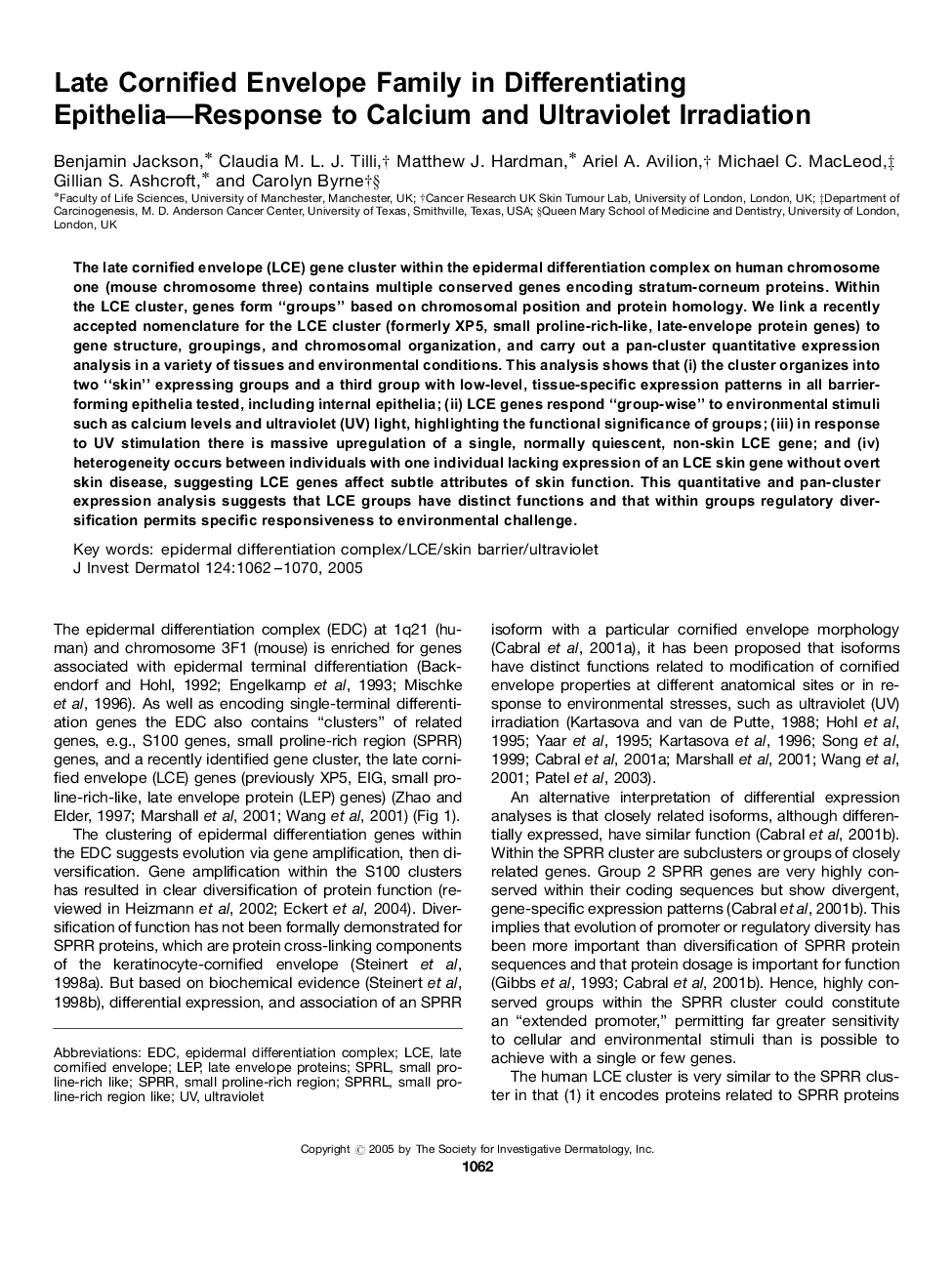| Article ID | Journal | Published Year | Pages | File Type |
|---|---|---|---|---|
| 9231183 | Journal of Investigative Dermatology | 2005 | 9 Pages |
Abstract
The late cornified envelope (LCE) gene cluster within the epidermal differentiation complex on human chromosome one (mouse chromosome three) contains multiple conserved genes encoding stratum-corneum proteins. Within the LCE cluster, genes form “groups” based on chromosomal position and protein homology. We link a recently accepted nomenclature for the LCE cluster (formerly XP5, small proline-rich-like, late-envelope protein genes) to gene structure, groupings, and chromosomal organization, and carry out a pan-cluster quantitative expression analysis in a variety of tissues and environmental conditions. This analysis shows that (i) the cluster organizes into two “skin” expressing groups and a third group with low-level, tissue-specific expression patterns in all barrier-forming epithelia tested, including internal epithelia; (ii) LCE genes respond “group-wise” to environmental stimuli such as calcium levels and ultraviolet (UV) light, highlighting the functional significance of groups; (iii) in response to UV stimulation there is massive upregulation of a single, normally quiescent, non-skin LCE gene; and (iv) heterogeneity occurs between individuals with one individual lacking expression of an LCE skin gene without overt skin disease, suggesting LCE genes affect subtle attributes of skin function. This quantitative and pan-cluster expression analysis suggests that LCE groups have distinct functions and that within groups regulatory diversification permits specific responsiveness to environmental challenge.
Related Topics
Health Sciences
Medicine and Dentistry
Dermatology
Authors
Benjamin Jackson, Claudia M.L.J. Tilli, Matthew J. Hardman, Ariel A. Avilion, Michael C. MacLeod, Gillian S. Ashcroft, Carolyn Byrne,
